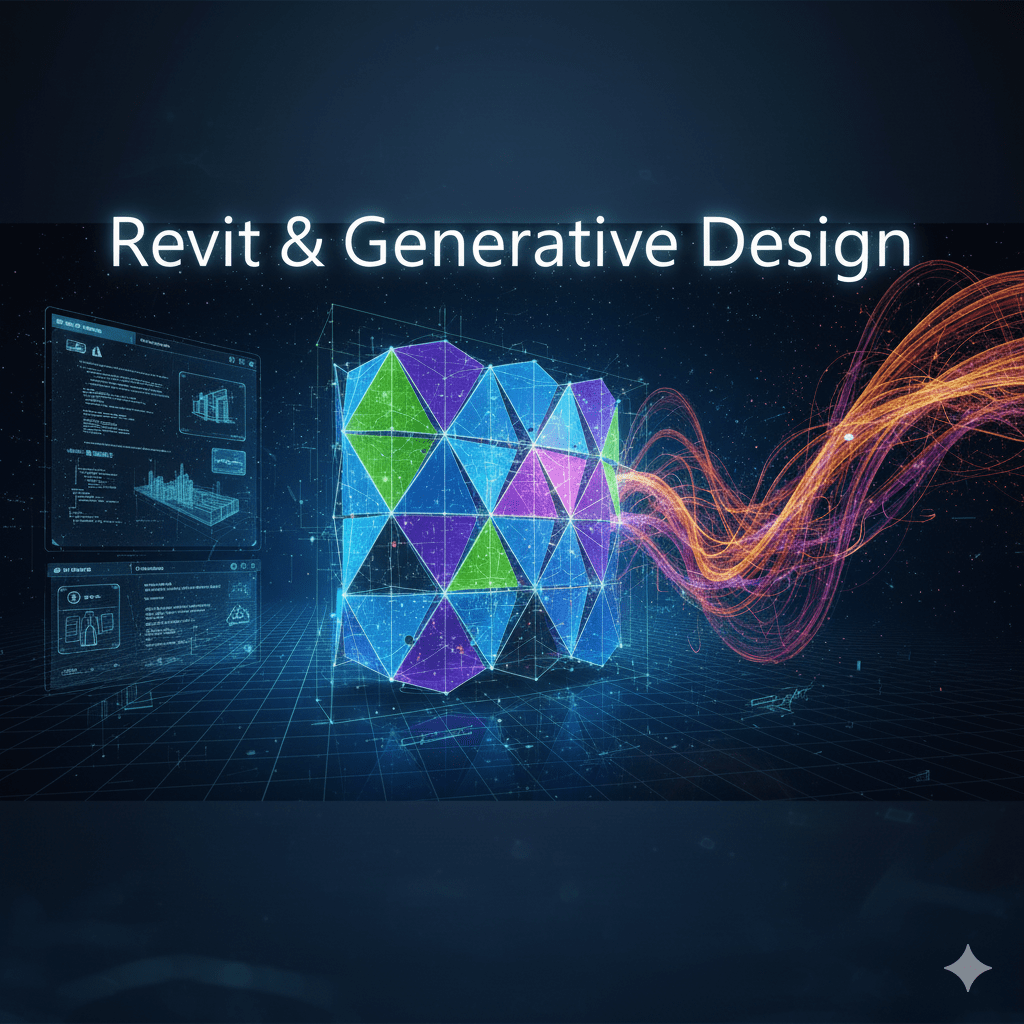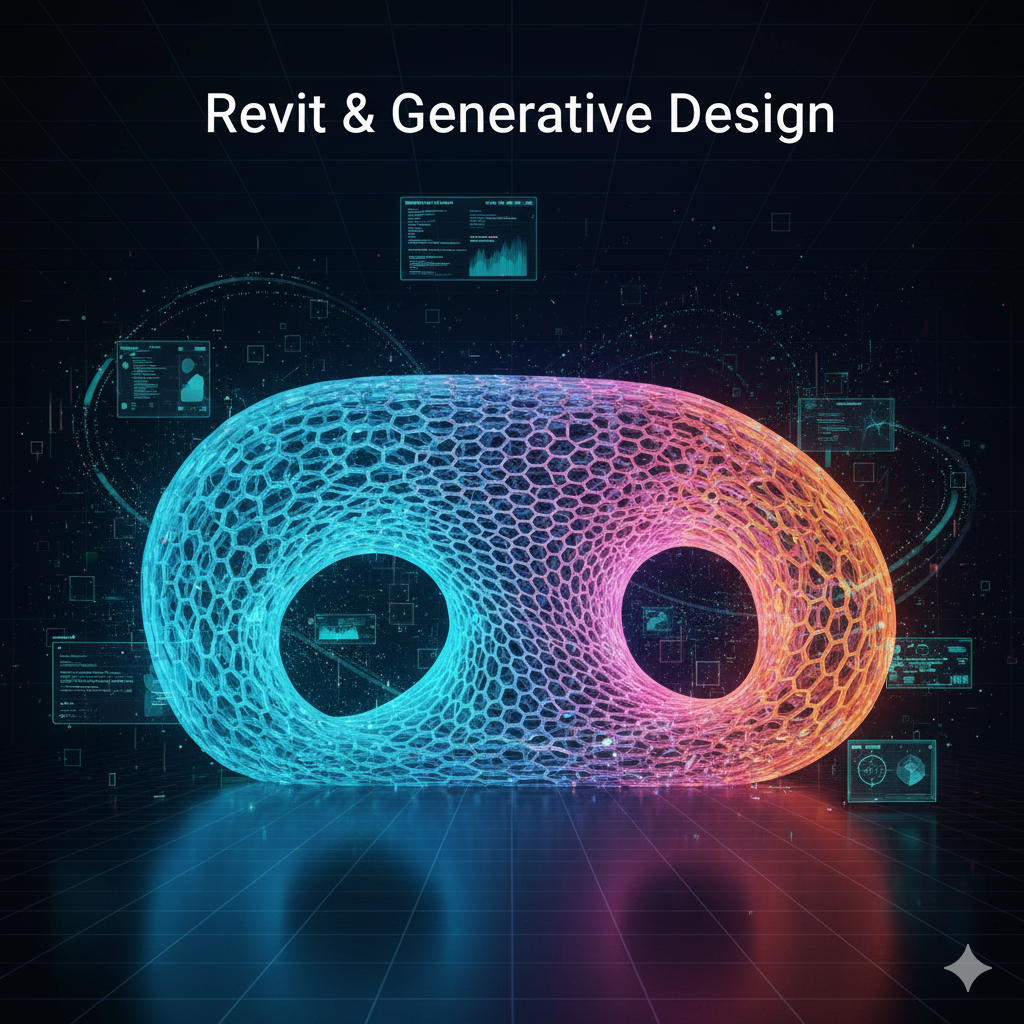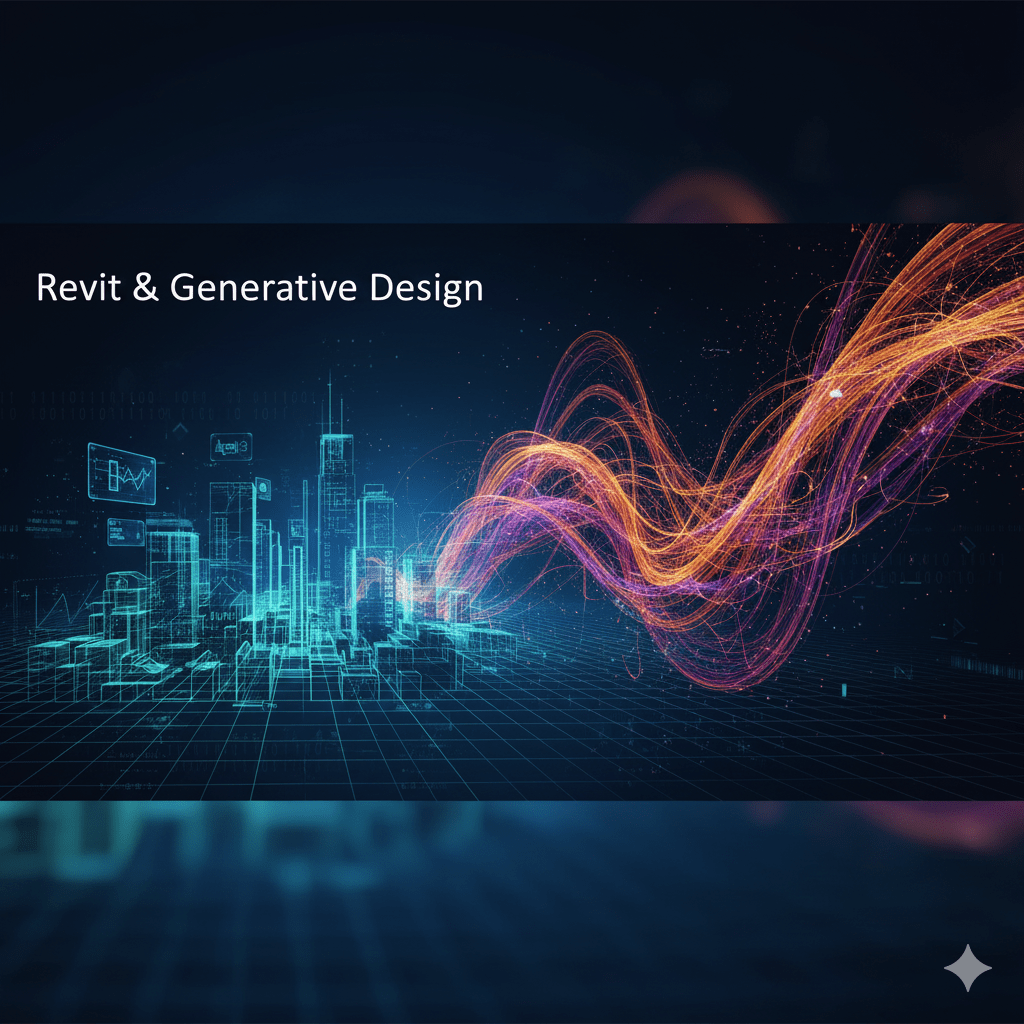OUTSOURCE CREATIVE SERVICES - OUTSOURCE CREATIVE WORKS-OUTSOURCING CREATIVE WORK - OUTSOURCE CREATIVE DESIGN -OUTSOURCE 2D ARTWORKS - 2D ART SERVICES - 2D ART OUTSOURCING - ART OUTSOURCING - OUTSOURCE ILLUSTRATION WORKS - OUTSOURCE ILLUSTRATION SERVICES - OUTSOURCE 3D MODELING - 3D MODEL OUTSOURCING- OUTSOURCING CAD WORKS-OUTSOURCE ARCHITECTURAL SERVICES -BIM - REVIT - 3D FLOOR PLAN - BIM OUTSOURCING SERVICES - MEP - REVIT MODELING - 3D FURNITURE MODELING - 3D ARCHITECTURE MODELING - AUGMENTED REALITY MODEL - VIRTUAL REALITY MODEL - 3D RENDERING -PRODUCT MODELING - 2D SERVICES - OUTSOURCE CREATIVE SERVICES -3D MODELING SERVICES - VFX
Revit & Generative Design: What Every Architect Should Know
For decades, the architectural design process has followed a predictable path: conceptual sketches lead to manual modeling, followed by iterative testing, analysis, and optimization. This linear, human-centric cycle, while creative, is inherently limited by time, cognitive bias, and the sheer volume of variables a single designer can manage. In the era of data-driven performance and sustainability mandates, this traditional process is no longer sufficient.

The future of Architectural Services is not just about leveraging BIM Services—it's about augmenting human creativity with computational power. This convergence is defined by the powerful pairing of Revit and Generative Design.
Generative Design (GD) is a revolutionary methodology where, instead of directly modeling a solution, the architect defines a set of goals, constraints, and parameters (e.g., maximum floor area, minimal solar gain, optimal view distribution, budget limits). The software then uses powerful algorithms to rapidly explore thousands of potential design solutions, presenting the designer with a diverse set of high-performing options that a human might never have conceived.
This strategic guide will demystify the fusion of Revit and Generative Design, detailing why mastering this workflow is crucial for firms engaged in CAD Outsourcing and Outsourcing Architectural Services. Understanding this shift is the key to unlocking true design optimization, securing high-profile commissions, and future-proofing your practice in the increasingly complex world of digital construction.
The Evolution of Architectural Workflow: From CAD to Computation
To appreciate the power of Generative Design in Revit, one must first understand the journey of digital modeling in architecture:
1. The CAD Era: Digital Drafting
The first wave of digitization was CAD Outsourcing, which simply replaced paper and drafting tables with digital tools. While faster, the output was primarily lines and arcs—a digital blueprint, but not an intelligent model. The focus was on documentation.
2. The BIM Era: Intelligent Modeling
The shift to BIM Services with tools like Revit introduced the concept of the intelligent model. Every wall, door, and window is an object with data, enabling coordination, clash detection, and quantity takeoffs. This made Revit Services a necessity for complex projects, moving the focus from documentation to coordination and data management. Many firms embraced Outsourcing cad Services to handle the high-volume, detailed BIM modeling required.
3. The Generative Era: Performance-Driven Design
Generative Design is the third wave. It leverages computational power to synthesize numerous design possibilities based on predefined goals and constraints (e.g., maximizing daylighting, minimizing material cost, optimizing view access, or adhering to specific zoning envelopes). It shifts the design focus from intuition-led creation to performance-led optimization.
Understanding Generative Design in the Revit Ecosystem

Generative Design is an integral feature now accessible directly within the Autodesk Revit and Dynamo environment. It is fundamentally about creating a framework where design variables can be tested against measurable objectives.
The Core Components:
- Goals (Objectives): What you want to achieve (e.g., Maximize seating capacity, Minimize solar heat gain).
- Inputs (Parameters): The variables the algorithm is allowed to change (e.g., width of a balcony, angle of louvers, placement of office partitions).
- Constraints (Rules): The non-negotiable limitations (e.g., total floor area must not exceed 50,000 sq ft, column spacing must be 8m on center, or a specific circulation path must be maintained).
The Generative Design algorithm runs thousands of iterations, testing different combinations of inputs against the goals and constraints. It then presents the architect with a data-rich landscape of potential solutions, allowing them to select the "best" option based on quantifiable performance metrics, rather than just aesthetics.
Architectural Use Cases:
- Massing and Façade Optimization: Rapidly test facade orientations and shading device geometries to achieve ideal daylighting and energy performance targets. For high-rise projects, Generative Design can optimize unit mix and view corridors simultaneously.
- Space Layout Planning (Programming): A common challenge in large commercial or institutional buildings. Generative Design can quickly arrange hundreds of rooms, desks, or hospital beds to maximize adjacency, minimize travel distance, and maintain clear sight lines, all while respecting fire egress and accessibility codes programmed as constraints.
- Core and Circulation Optimization: Find the most efficient location and geometry for elevator cores, stairwells, and risers to maximize usable floor area and minimize structural cost—a critical element for firms utilizing detailed Outsourcing cad works for structural design.
- Structural Grid Optimization: While primarily a structural concern, the early optimization of the column grid in Revit is critical. Generative Design can test grids to minimize beam spans while maximizing planning flexibility for the BIM Services team.
The Strategic Value for Architectural Firms
The adoption of Generative Design paired with Revit Services provides several clear competitive advantages, particularly for large firms and those looking to scale their operations through strategic partnerships.
1. Elevating the Architect’s Role
By automating the repetitive, low-level iteration work, Generative Design frees the architect to focus on high-level strategic decision-making. The architect’s value shifts from being a draftsman or modeler to being a computational curator—a professional who defines the right problem for the algorithm to solve and interprets the resulting data to deliver superior value to the client.
2. Delivering Data-Backed Certainty
In the current market, clients are demanding proof of performance. Generative Design provides a documented record of how design decisions were made to meet measurable targets for energy efficiency, cost, and functional metrics. This data-backed certainty is a powerful differentiator in project pitches.
3. Enhancing Collaboration and Outsourcing Architectural Services
Generative Design provides a clear, objective starting point for design. When utilizing Outsourcing cad Services, the in-house team can provide the Generative Design script and the high-level Revit Services output (the optimized form). The outsourced partner, specialized in Outsourcing cad works and detailing, can then take that optimized form and rapidly complete the detailed BIM model, streamlining the entire digital construction workflow.
4. Managing Project Complexity
As architectural projects become larger, more dense, and multi-functional, managing the interconnectedness of thousands of design parameters becomes humanly impossible. Generative Design, running within a powerful BIM Services environment like Revit, is the only way to manage this complexity, test all variables, and ensure an optimal solution is reached within compressed timelines.
Integration Challenges and the Role of CAD Outsourcing

While the potential is immense, integrating Generative Design into traditional workflows requires a shift in skill set and process.
The Learning Curve:
Generative Design requires architects to become proficient in visual programming (using Dynamo) to set up the design space and define the metrics. This is a specialized skill that not all in-house teams possess.
The Strategic Outsourcing Solution:
For many firms, the most practical and efficient path to adoption is through strategic CAD Outsourcing with partners who specialize in advanced Revit Services and computational design.
- Computational Expertise on Demand: Instead of hiring a full-time computational designer, firms can engage Outsourcing Architectural Services providers specifically for the Generative Design phase of a project. They set up the scripts, run the optimization, and deliver the final, data-verified geometry back to the in-house team.
- High-Volume Modeling Integration: Once the optimal massing or layout is chosen from the Generative Design output, the firm can use the same partner for detailed Outsourcing cad works—transforming the optimized concept into a fully coordinated, constructible BIM model ready for digital construction documentation. This ensures seamless continuity from concept to construction documents.
- Focus on Core Creativity: By relying on expert Outsourcing cad Services for both the complex computational setup and the high-detail BIM Services modeling, the in-house architectural team is freed to focus purely on the conceptual creativity and client relationship management—the highest-value activities.
Conclusion: The Future is Computational
The convergence of Revit Services and Generative Design is fundamentally changing the architectural process. It empowers architects to make data-informed decisions, manage unprecedented complexity, and deliver buildings that are inherently higher performing, more sustainable, and more cost-effective.
For any modern architecture firm, understanding Generative Design is no longer optional—it is essential for competitiveness. Whether achieved through upskilling internal teams or strategically leveraging specialized Outsourcing Architectural Services and CAD Outsourcing partners, mastering this computational workflow will be the defining characteristic of successful architectural practice in the era of digital construction. The future architect is one who designs not only with form and function, but also with data and algorithms.
FAQs: Revit & Generative Design for Architects
Q1: What is Generative Design (GD)?
A1: Generative Design is a process where the architect defines goals (like "maximize daylight") and constraints (like "max building height"), and computer algorithms rapidly generate thousands of high-performing design options for the architect to choose from.
Q2: Does Generative Design replace the architect?
A2: No. GD is a powerful tool that augments the architect's ability. It handles the complex calculations and explores geometric possibilities, freeing the architect to focus on setting design goals and making final creative and aesthetic decisions.
Q3: Why is Revit the best tool to use with Generative Design?
A3: Revit is data-rich. It provides the standardized, intelligent geometry that GD algorithms need to accurately calculate performance (like solar gain or area) and allows the final optimized design to be easily converted back into a usable BIM model for documentation.
Q4: What is the main benefit of using GD in architectural services?
A4: The main benefit is achieving design optimization. It allows architects to find solutions that meet performance metrics (like sustainability or efficiency) faster and more effectively than manual iteration ever could.
Q5: How can a firm outsource Generative Design expertise?
A5: Firms can use Outsourcing CAD Services to hire specialized computational designers who are experts in scripting tools like Dynamo. These partners can write and manage the complex generative scripts needed to run the analysis, providing this high-level skill on demand.
This video provides an introduction to the concept of generative design and its application within the field of architecture, offering visual context for the topics discussed in the blog. What is Generative Design in Architecture?



.jpg)






